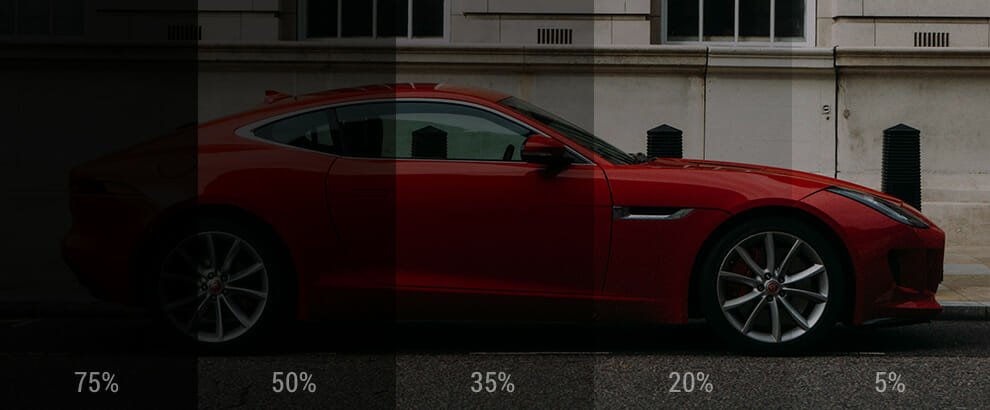
If, as, or when this material becomes torn, bubbled or otherwise worn, it must be removed or replaced. However, legislation signed into law effective January 1, 1999, exempts from the above prohibition specified clear, colorless, and transparent car window tinting that is installed, affixed, or applied to the front driver and passenger side windows for the specific purpose of reducing ultraviolet rays. The law prohibits any person from driving any motor vehicle with any window film, displayed, installed, affixed, or applied upon the windshield or side or rear windows, with certain limited exceptions. If the rear window has window film, the vehicle must have outside rear view mirrors on both sides. Can I put after-market car window tinting on the windows of my vehicle? The windshield and front driver’s side and passenger’s side windows cannot receive any aftermarket window tinting. Tint laws are the same in Vacaville and Dixon. Any darkness can be used on rear passenger doors and rear window. Driver door must allow more than 70% of light in. But remember, this could potentially result in an increased likelihood of interactions with law enforcement so make sure your other documentation such as license, insurance, and registration are all up to date!Īlso of note, (1) a driver is required to have dual side mirrors if the rear window of the car is tinted, and (2) a driver cannot use red, amber or blue tint on any window.Non- Reflective Film is allowed on the top 4 inches of the windshield. So if you are one of the drivers for whom window tint is medically recommended, by all means take advantage of the new exemption created by AB 1303. …And once an officer has probable cause to pull you over, his observations while conducting that routine traffic stop are all fair game. It is important to keep in mind, however, that those utilizing this exemption can still expect to have interactions with law enforcement stemming from their use of tint as officers can still use a perceived violation of the tinting laws as probable cause to initiate a traffic stop. Through the passage of AB 1303, California created a small but important exemption to the window shield tint and object placement prohibition Californians who obtain a signed certificate by a dermatologist indicating the driver has a sensitivity to UV rays can now tint their windshields. For example, despite there being no current limitations on the darkness of rear windows, the front side windows must allow more than 70% of light to pass through into the inside the car, and a car can only have non-reflective tint on the top four inches of the windshield. Whether instructed to be placed on the windshield or hung on the rear-view mirror, based on the language of the law, doing so could be construed as a violation.) Also, other regulations address the darkness and location of the tint. (Ironically, it seems Californians are constantly encouraged to do the complete opposite. This, however, is only for select windows and can be lowered down to 70 if you use factory-tinted windows. California window tint laws state that the car should have at least 88 light capable of passing through the windows regardless of its body type. Vehicle Code §26708 generally prohibits drivers from placing any material that may reduce or obstruct their view through the windshield. While this is common in other states, it should be noted that California’s laws are very strict.


In fact, in 2015, the California Highway Patrol reported a total of nearly 2000,000 tickets issued to drivers for violating California window tint law between January 2015 and August 2017! Although many Californians have their windows tinted, window tinting has always been heavily regulated by law enforcement and can be used a means for initiating a traffic stop. Window tinting is utilized for various different reasons, for example: added privacy, prevent damage to the interior of the vehicle, or-as tinting film can reflect incoming light and therefore reduce the glare and heat inside the car-to keep cool. One of the most common efforts in doing so involves window tinting. As the summer reaches its peak, many drivers are utilizing any available means to stay cool and out of the sun.


 0 kommentar(er)
0 kommentar(er)
